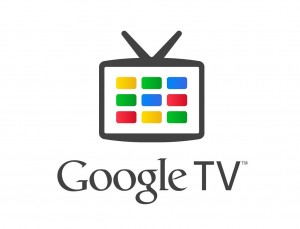Google TV is what’s coming. It will come in dribs and drabs and there will false starts and dry holes, but eventually, the computer and the television set will be one device used to select and view content that is aggregated by the user with no intermediary and no restrictions on what can be watched, when it can be watched, or what must or must not be purchased to go along with it. 
Yes, it will be the raw Internet on TV with a DVR attached to it and maybe a menu and link service delivered by the broadband provider.
The television will become what the broadcasting industry calls a multi-screen, capable of viewing a primary program, put several channels in preview, surf the web, and display a list of favorites. This device will be networked with all the other similar and peripheral devices in the house – some hard wired into the broadband feed, some with a wireless connection where bandwidth is less of an issue. It will all be programmable with a PDA or cell phone.
In the future, every content producer will be a channel identified with a URL. If you want KING5, KOMO, Discovery, History and ESPN – those will be your favorites that you’ll be able to click through with your remote. Other channels can be accessed via IP and be added or deleted at will – ala Carte.
The challenges associated with creating a revenue stream out of this will be daunting. The big brands obviously have a huge head start. But there will be a time when your “news” tab might include on demand broadcasts from your favorite local channel, the New York Times, ABC News and CNBC. It might also include favorite blogs or even a YouTube channel that aggregates content that interests you.
We’re heading toward total customization and choice where every entity that creates content resides equally on the Internet. Net neutrality will be crucial to this evolution. It also means that any entity with anything to sell, be it a product, service or idea, needs to be in the content creation business.
Once every channel is available at any time, anywhere – 3D and holographic enhancement will round out the world of media as far as I can envision it at this time. After that comes pharmaceutical enhancement and remote viewing that will make the media experience truly immersive.
Think that sounds crazy? Think about the world 100 years ago and think how crazy some of the things we take for granted today would sound.









